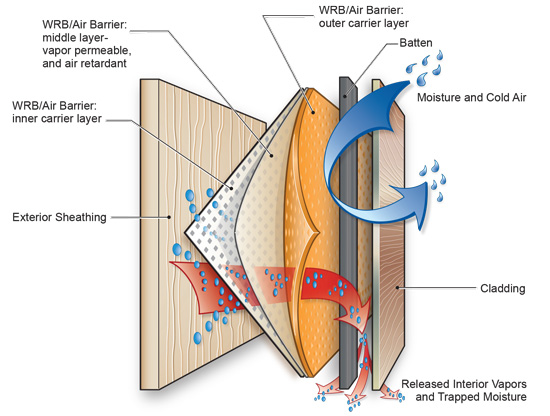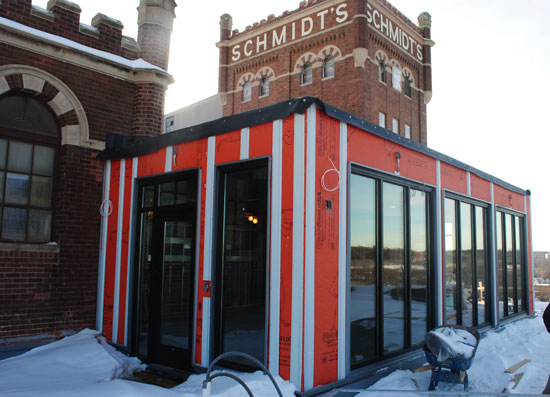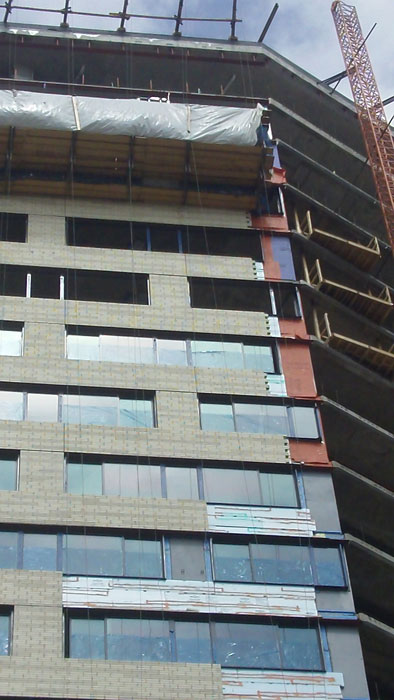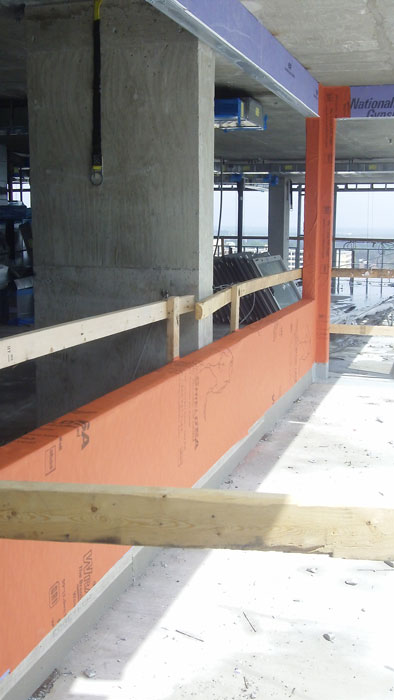Breaking Old Rules for Air-Barrier Installation
In heating climates—areas where there is a significant need for heating—you may have noticed how the upstairs is often warmer than the down stairs if the ventilation is not balanced. Or it is warmer at the ceiling than at the floor. As the warm air rises, it creates a positive pressure at the top of the building and a negative pressure below. These pressure differences force warm air out through the top of the building, sucking cooler air into the lower section of the building. This is called the stack effect.
The stack effect and air leakage adds to the amount of air the HVAC system needs to cool or heat, and will also bring in outside pollutants and moisture.

Image courtesy of VaproShield
The key to an efficient, healthy, and durable building is to control airflow, which brings in vapor, and stop heat flow.
To be most effective, the thermal (insulation) barrier, air barrier, and moisture barrier (liquid and vapor water) should be continuous all around the building exterior, including all rough openings, such as windows. The key, says building science consultant Scott Wood, “is to control air flow (which brings in the vapor), and stop convective heat flow.”
Stopping airflow and liquid water from entering a building envelope, yet allowing vapor to come and go, are the sophisticated functions we ask of our modern building envelopes. Let’s see how we got here.

Photo courtesy of VaproShield
When a brewery was founded in St. Paul, Minnesota, in the mid 1800s, little thought was given to air or vapor intrusion. Buildings were drafty, and energy was cheap. But when the brewery was converted to artists’ lofts in 2013, the buildings were brought up to today’s standards with a technologically advanced self-adhered WRB/air barrier.












